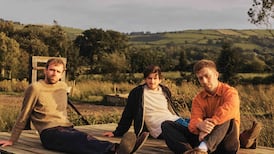Does it matter what an artist looks like? Surely we should only care about the work they do. Yet we are usually very curious about appearances, perhaps because we expect the face to fit the work in some way. Many artists have become iconic figures in their own right, often because self-portraiture forms an important part of what they do, but also, since photography arrived on the scene, because they are to a greater or lesser extent public figures.
The Artist's Eye is from the Galleria Civica di Modena in Italy, known for its collections of drawings and photographs. The gallery's beginnings were in a succession of contemporary-art exhibitions from 1955. Photography entered the frame from the 1970s, early in terms of its recognition as a contemporary art medium. It naturally featured in the beginnings of a permanent collection in the late 1980s.
There was a documentary spirit to the collection from the beginning – that is, a desire to document art and artists as much as acquire examples of outstanding art.
0 of 4
The Artist's Eye taps into this ambition. Artists make images but they can also be the subjects of images. They can feature in their own works, and they can play roles they construct for themselves: performing the role of artist.
Rembrandt is personally familiar to us via a succession of self-portraits that chart his life from youthful swagger to rueful old age. Through the paintings, we can place him in his world and gauge his fortunes to an almost uncanny degree.
In our own time, Tracey Emin has more consciously positioned herself as subject and centre of her work. As Laura Cumming describes her in A Face to the World, her book on self-portraiture, Emin has a dual life, as a subject of the work she makes and as an art celebrity, leading some to think of her "as a total artwork in herself".
Her very public enactment of a bruised, inner persona brings to mind several predecessors, including van Gogh with his bandaged ear, Frida Kahlo and her series of gruelling, often allegorical self-portraits, and also Andy Warhol, the deadpan socialite. Emin doesn't feature in The Artist's Eye, but Warhol does.
Projecting our dreams and desires
There's a psychoanalytical view that the ideal celebrity is essentially a blank space on to which we can project our own dreams and desires. If they're too interesting they are of no interest, because then we have to start thinking about them as beings like ourselves. Warhol cultivated a kind of personal blankness, and he thrived in a culture of celebrity.
Much the same could be said of another artist whose image is included: the surrealist showman Salvador Dalí. His sheer opacity makes him an object of fascination for millions. His public face was a creation and he endeavoured to control it completely. There are two pictures of Dalí in the exhibition. In Franco Fontana’s photograph, taken in 1976, something odd happens. Fontana manoeuvres his way around Dalí’s contrivance; we get a sense of an unravelling, vulnerable persona.
While there is no Emin in the show, Francesca Woodman and the Finnish photographic artist Elina Brotherus are represented. Woodman killed herself at a shockingly young age, leaving behind a body of work in which she figures prominently as a fugitive, disappearing presence. Her posthumous influence has been enormous.
Brotherus has reworked familiar examples of European art, writing herself centrally into the script, as Caspar David Friedrich's Wanderer Above the Sea of Fog, for example. La Main, part of a sequence that nods to Magritte, is about learning a language, with post-it notes as study aids, following her move to France, but it's worth noting she has also made work alluding directly to Woodman.
We're not especially aware of the appearance of many of today's leading artists. Gerhard Richter, for example, a figure of immense professional stature, does not at all have an iconic public profile in the manner of Emin or Warhol or Dalí. In fact, as it comes across in Carlo Fei's photograph of him, he looks and dresses like an anonymous, middle-ranking bureaucrat, hardly like an "artist" at all. John Cage, when captured by a camera, also projects a relaxed anonymity.
There was a time when pretty much everyone, on the other hand, would recognise a photograph of Picasso. Less so now, perhaps, as his star has faded.
Although revered by a large proportion of the art world, Joseph Beuys did not become a household name, but he projected a tremendously theatrical presence and, as virtually any image of him will attest, was a brilliant photographic subject.
Both Yoko Ono and John Lennon remain immediately recognisable, and Annie Leibovitz's double portrait of a naked Lennon hugging an impassive Yoko, taken just before he was murdered, has itself become an iconic image.
The Artist's Eye is at the Lewis
Glucksman Gallery, UCC, until July 7th. glucksman.org
















